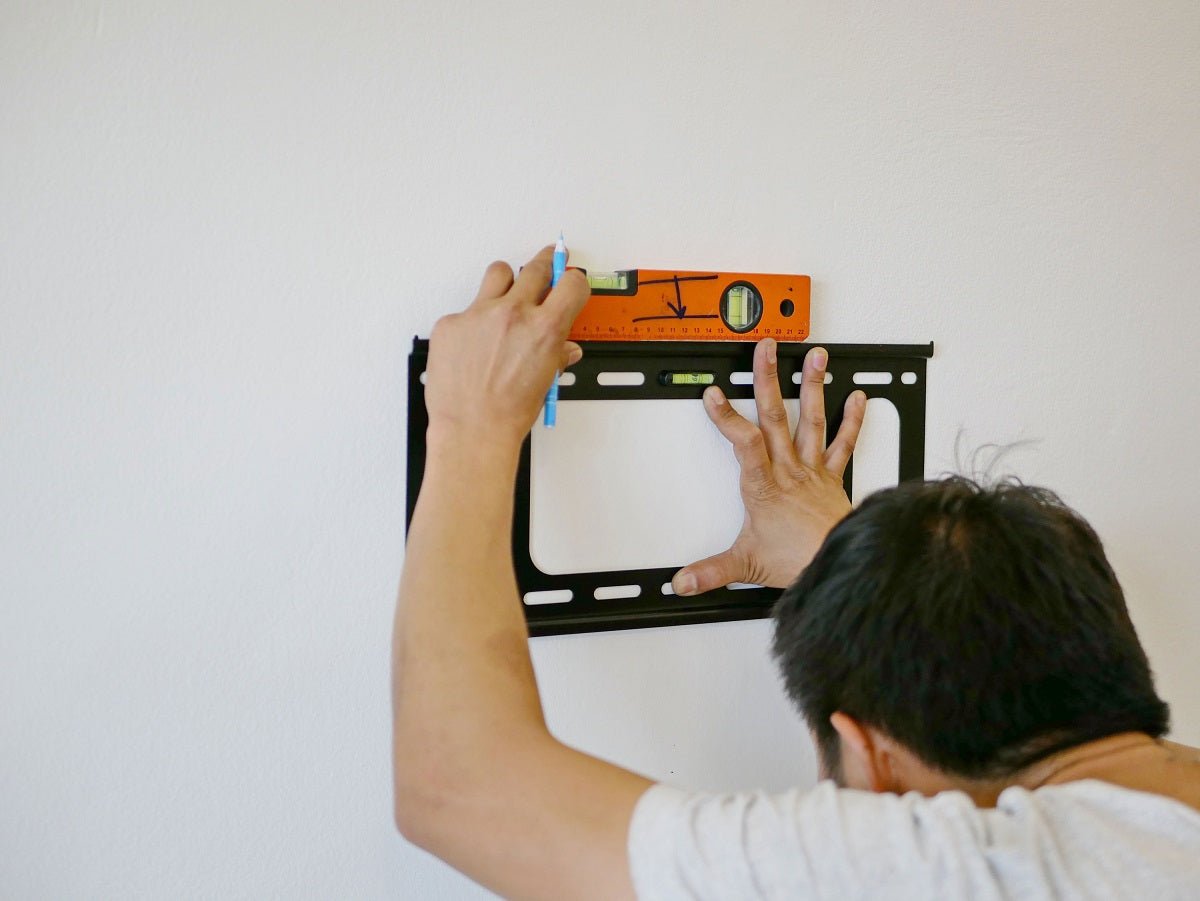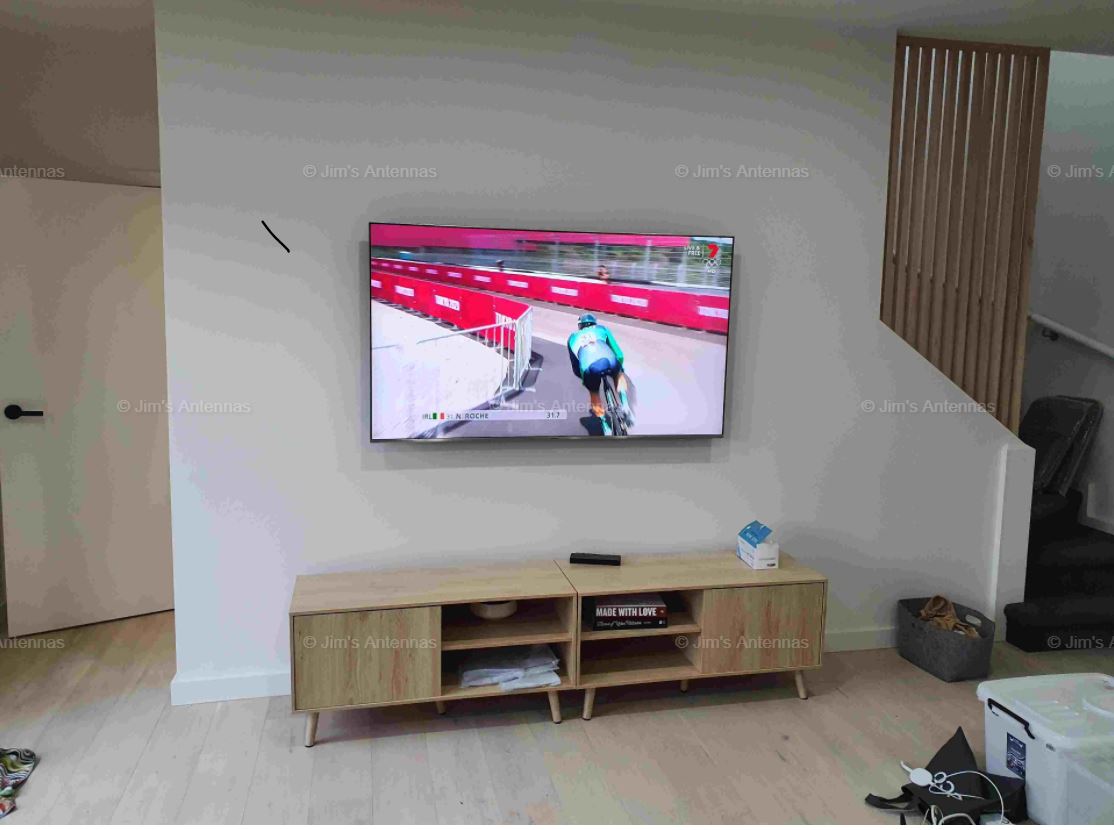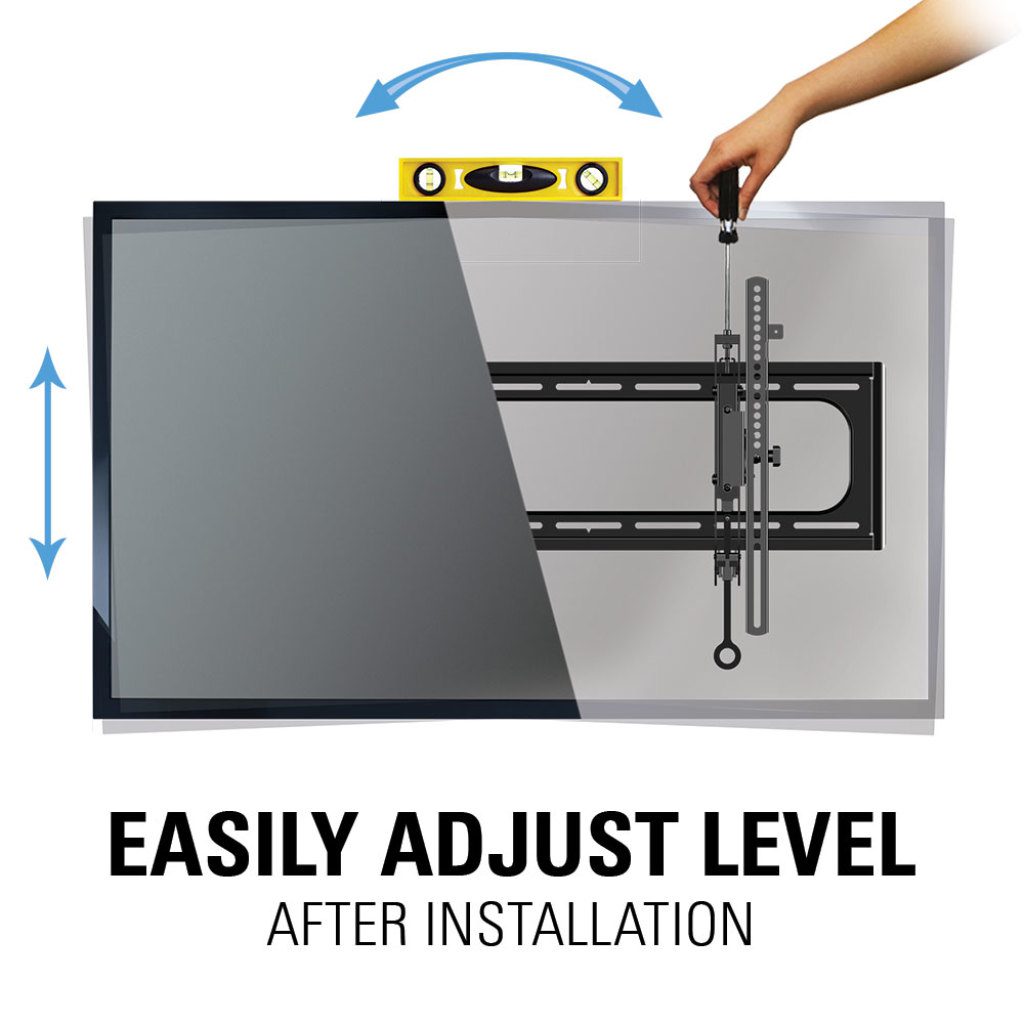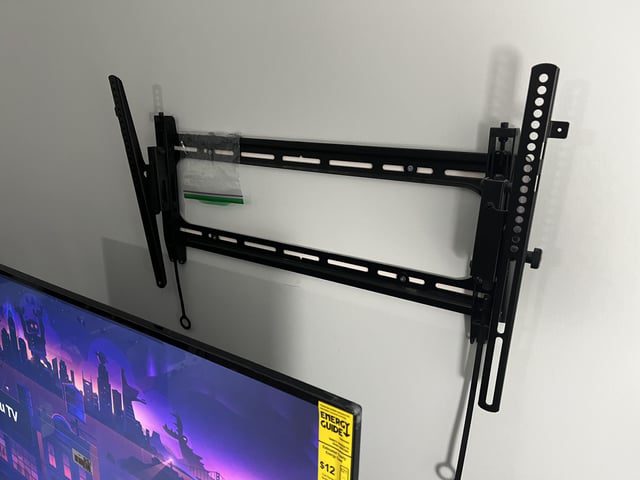To determine if your wall is strong enough to mount a TV, check for studs using a stud finder and ensure they are properly anchored. Additionally, consider the weight capacity of the wall mount and compare it to the weight of your TV.
Introduction (120 words): Mounting a TV on a wall is a popular choice for homeowners looking to create a sleek and space-saving entertainment setup. However, before taking the leap, it’s crucial to ensure that your wall is strong enough to support the TV’s weight.
A TV falling off the wall can cause damage and potential harm, so taking the necessary precautions is essential. To assess the strength of your wall, you can use a stud finder to locate the studs behind the drywall. Once found, check if the studs are properly anchored and sturdy enough to hold the weight of the TV. Additionally, consider the weight capacity of the wall mount and compare it to the weight of your TV to ensure compatibility. By following these steps, you can determine if your wall is strong enough to safely mount your TV.

Credit: mount-it.com
Factors To Consider
To determine if your wall is strong enough to mount a TV, consider factors like the wall material, the weight of the TV, and the mounting system. Check if the wall is solid, stable, and capable of supporting the TV’s weight to ensure a secure and safe installation.
Factors to Consider When mounting a TV on the wall, there are several factors to consider to ensure that the wall is strong and capable of supporting the weight of the TV securely. The weight limit of the wall, the material and construction of the wall, and the location of the wall are all important considerations that need to be evaluated before proceeding with the installation. H3: Weight Limit of the Wall Determining the weight limit of the wall is crucial to avoid any potential damage or accidents. Different types of walls have different weight capacities, so it’s essential to know the weight limit of your specific wall. Most walls can support lightweight TVs, but larger and heavier TVs may require additional reinforcement. If you are unsure about the weight limit of your wall, consult the manufacturer’s guidelines or seek advice from a professional contractor or engineer. By staying within the weight limit, you can ensure that your TV is securely mounted without compromising the structural integrity of the wall. H3: Material and Construction of the Wall The material and construction of the wall play a vital role in determining its strength and stability. Generally, walls made of concrete, brick, or solid wood provide better support for TV mounting compared to walls made of drywall or other lightweight materials. These sturdier walls can bear the weight of a TV more effectively, minimizing the risk of the TV falling. Inspect the condition of your wall to ensure it is in good shape without any cracks or weaknesses. If your wall is made of drywall or has any structural concerns, you may need to reinforce it before mounting the TV. Consult a professional to determine the necessary measures to reinforce the wall if needed. H3: Location of the Wall The location of the wall where you intend to mount the TV is another crucial factor. Walls that are load-bearing or adjacent to structural supports tend to be stronger and more suitable for TV installation. These walls provide added stability, reducing the risk of the TV coming loose or causing damage. If you are unsure about the location of the wall or its structural properties, it is advisable to consult a professional contractor or engineer for a thorough evaluation. They can help you identify the safest and most suitable location for mounting your TV, ensuring the wall is strong enough to support the weight. In conclusion, before mounting a TV on the wall, consider factors such as the weight limit of the wall, the material and construction of the wall, and the location of the wall. By assessing these crucial factors, you can make informed decisions and ensure the safety and stability of your TV installation. Always prioritize safety and consult professionals whenever necessary to guarantee a secure mount for your TV.
Credit: www.jimsantennas.com.au
Assessing The Wall’s Strength
Assessing the strength of your wall is crucial before mounting a TV. Ensuring the wall can support the weight and handle the stress is essential to prevent accidents. By following proper guidelines and consulting professionals if needed, you can confidently determine if your wall is strong enough for TV installation.
Before mounting a TV on your wall, it is crucial to assess the wall’s strength to ensure a secure and safe installation. Identifying load-bearing walls, checking for wall studs, and assessing the wall’s condition are essential steps in determining if your wall is strong enough to support the weight of a TV. Let’s dive into each of these factors in detail.
Identifying Load-bearing Walls
Load-bearing walls, as the name suggests, bear the weight of the structure itself and any additional loads placed on them, such as furniture, shelves, or in this case, a TV. It is vital to identify if the wall you intend to mount your TV on is a load-bearing wall to ensure it has the necessary strength and structural support.
Checking For Wall Studs
Wall studs are vertical framing members within a wall that provide support and strength. Finding the wall studs is crucial for a secure TV mount installation, as they offer the necessary stability to hold the weight of the TV.
Using A Stud Finder
One of the easiest ways to locate wall studs is by using a stud finder. This handheld device uses sensors to detect changes in density behind the wall, indicating the presence of a stud. Simply slide the stud finder along the wall until it emits a beep or visual indication, which typically marks the center of the stud.
Assessing The Wall’s Condition
In addition to identifying load-bearing walls and locating wall studs, it is crucial to assess the overall condition of the wall itself. Look for any signs of damage or deterioration that could weaken the wall’s structural integrity. Cracks, water damage, or noticeable sagging are red flags that may indicate a weak or unsuitable wall for mounting a TV.
It’s important to address any structural issues or seek professional advice before proceeding with the TV installation.
Seeking Professional Advice
If you’re unsure about the strength of your wall to safely mount a TV, seeking professional advice is the best way to ensure the safety of your television and your home. Consulting a structural engineer or hiring a professional installer can provide you with the expertise and knowledge necessary to make an informed decision. Here’s a breakdown of both options:
Consulting A Structural Engineer
A structural engineer is a qualified professional who specializes in assessing the structural integrity of buildings. When it comes to mounting a TV on a wall, consulting a structural engineer can give you peace of mind that your wall is strong enough to support the weight and stress of the television. Here are a few steps to follow:
- Contact a reputable structural engineering firm in your area.
- Arrange for a consultation and provide them with the necessary information about your wall and the TV you plan to mount.
- The structural engineer will assess the wall’s strength, considering factors such as its material, condition, and load-bearing capabilities.
- Based on their assessment, the engineer will provide you with a professional opinion and recommendations for any necessary reinforcements or modifications.
Hiring A Professional Installer
If you prefer not to consult a structural engineer directly, you can consider hiring a professional installer who specializes in mounting TVs. These professionals are experienced in determining the suitability of walls for TV installation and can often provide advice on the spot. Here’s what you need to do:
- Research and look for reputable TV installation companies or professionals in your area.
- Get in touch with them and discuss your concerns about the wall’s strength.
- Provide them with the necessary details, including the weight and specifications of your TV.
- The professional installer will conduct an assessment of the wall’s condition and strength, taking into account factors such as studs, wall material, and potential load-bearing limitations.
- Based on their evaluation, the installer will advise you on whether the wall is suitable for mounting your TV or if any reinforcements are required.
Remember, whether you consult a structural engineer or hire a professional installer, their expertise will help you make an informed decision about mounting your TV. It’s always better to be safe than sorry!
Reinforcing The Wall
Before mounting a TV on your wall, it’s crucial to ensure that the wall is strong and sturdy enough to support the weight. Reinforcing the wall is a necessary step to prevent any accidents or damage to both your TV and the wall. In this section, we will explore two methods to reinforce the wall and enhance its strength to safely accommodate your TV installation.
Installing A Wall-mount Reinforcement Kit
If you have concerns about the wall’s structural integrity, consider installing a wall-mount reinforcement kit. These kits are specifically designed to provide extra support and distribute the weight of your TV evenly across the wall. The kit typically includes steel bars, brackets, and sturdy screws, which are essential for securing the TV mount.
Adding Additional Support
In some cases, it may be necessary to add additional support such as a plywood backing or wall studs. This step is especially important if you have a heavy or oversized TV. By attaching a plywood backing to the wall, you create a strong surface that can effectively hold the weight of the TV. Alternatively, reinforcing the wall studs by installing stronger ones or adding extra braces can also increase its load-bearing capacity.
When adding additional support, it’s crucial to locate the wall studs accurately. Using a stud finder, mark the stud locations on the wall. This will help you determine the precise spots to attach the reinforcement materials securely.
By reinforcing the wall using a wall-mount reinforcement kit or adding extra support, you can ensure that your wall is strong enough to mount a TV. These methods significantly reduce the risk of your TV falling or damaging the wall, giving you peace of mind as you enjoy your favorite shows and movies.
Alternative Mounting Options
When it comes to mounting a TV, it’s essential to ensure that your wall is strong enough to support the weight. However, if you discover that your wall isn’t suitable for mounting a TV, worry not! There are alternative options available to safely and securely display your television. In this article, we will explore three alternative mounting options that you can consider.
Using A Tv Stand
| Advantages | Disadvantages |
|
|
If your wall is not suitable for mounting a TV, using a TV stand is a convenient alternative. TV stands come in various styles and sizes, allowing you to choose one that complements your living space. They provide a stable base for your television and eliminate the need for wall installation. However, keep in mind that TV stands take up floor space and may not provide the optimal viewing height. Additionally, they might be less stable compared to wall mounting, especially if you have children or pets in your home.
Ceiling Mounts Or Floor Stands
Ceiling mounts:
- Utilizes the ceiling as a support structure
- Allows for adjustable viewing angles
- Frees up floor space
Floor stands:
- Provides a freestanding solution for mounting a TV
- Returns floor space
- Offers adjustable TV positioning
If the wall is not a viable option, you can consider ceiling mounts or floor stands. Ceiling mounts utilize the ceiling as a support structure, allowing you to adjust the viewing angles as desired. They also free up floor space, making them ideal for smaller rooms. On the other hand, floor stands provide a freestanding solution for mounting a TV, returning floor space that would have otherwise been occupied by a TV stand. They also offer adjustable TV positioning, enabling you to find the perfect viewing angle.
Mounting On A Reinforced Cabinet
If you have a sturdy and well-built reinforced cabinet, another alternative is to mount your TV on it. Ensure that the cabinet is designed to withstand the weight and has enough space to accommodate the TV size. This option is particularly useful if you already have a cabinet in your living room or entertainment area, as it eliminates the need for additional installation or purchasing new furniture. However, make sure to follow the manufacturer’s guidelines and secure the TV properly to avoid accidents.
While wall mounting is often the preferred choice, there are alternative options available if your wall is not strong enough. Consider using a TV stand, ceiling mounts or floor stands, or mounting your TV on a reinforced cabinet. Evaluate the advantages and disadvantages of each option to find the best solution for your specific needs and ensure a safe and enjoyable viewing experience.

Credit: www.mantelmount.com
Frequently Asked Questions For How Do I Know If My Wall Is Strong Enough To Mount A Tv
How Do I Know If My Wall Is Ok To Mount My Tv?
To determine if your wall is suitable for mounting a TV, follow these steps: 1. Check the wall’s material and thickness. 2. Ensure it is structurally sound and can support the weight of the TV. 3. Look for studs or beams behind the wall for secure mounting.
4. Use a stud finder or knock to find solid areas. 5. Consider consulting a professional if unsure.
Can You Put A Tv On A Weak Wall?
Yes, it is not advisable to put a TV on a weak wall due to the risk of damage or collapse. Placing it on a sturdy wall ensures stability and prevents any potential accidents. Consider reinforcing the weak wall or finding an alternative location for the TV.
Can A Tv Be Too Heavy To Mount On A Wall?
Yes, a TV can be too heavy to mount on a wall, depending on the weight capacity of the wall mount. Make sure to check the specifications of the wall mount and compare it to the weight of your TV before attempting to mount it.
How Do I Know My Wall Can Hold My Tv?
To ensure your wall can support your TV, check for these signs: 1. Locate the studs behind the wall, as they provide the necessary support. 2. Verify the weight capacity of the wall mount and compare it to your TV’s weight.
3. Consider the size and type of TV- larger and heavier TVs require stronger support. 4. If unsure, consult a professional to assess the wall’s suitability for mounting the TV. 5. Always follow the manufacturer’s guidelines and properly install the wall mount for added safety.
Conclusion
Considering the safety and stability of your TV mount, it is crucial to determine if your wall can withstand the weight. By following our guide and assessing factors such as stud location, wall materials, and stud finders, you can ensure that your wall is strong enough to securely hold your TV.
Don’t skip this important step to avoid potential accidents and costly damages. Check your wall’s strength before mounting your TV for a worry-free viewing experience.
- Unleash the Potential: Exploring the World of Ceiling TV Mounts - February 15, 2024
- How to Mount a Tv on a Swivel Stand - February 15, 2024
- How to Hang Tv Outside - February 14, 2024


